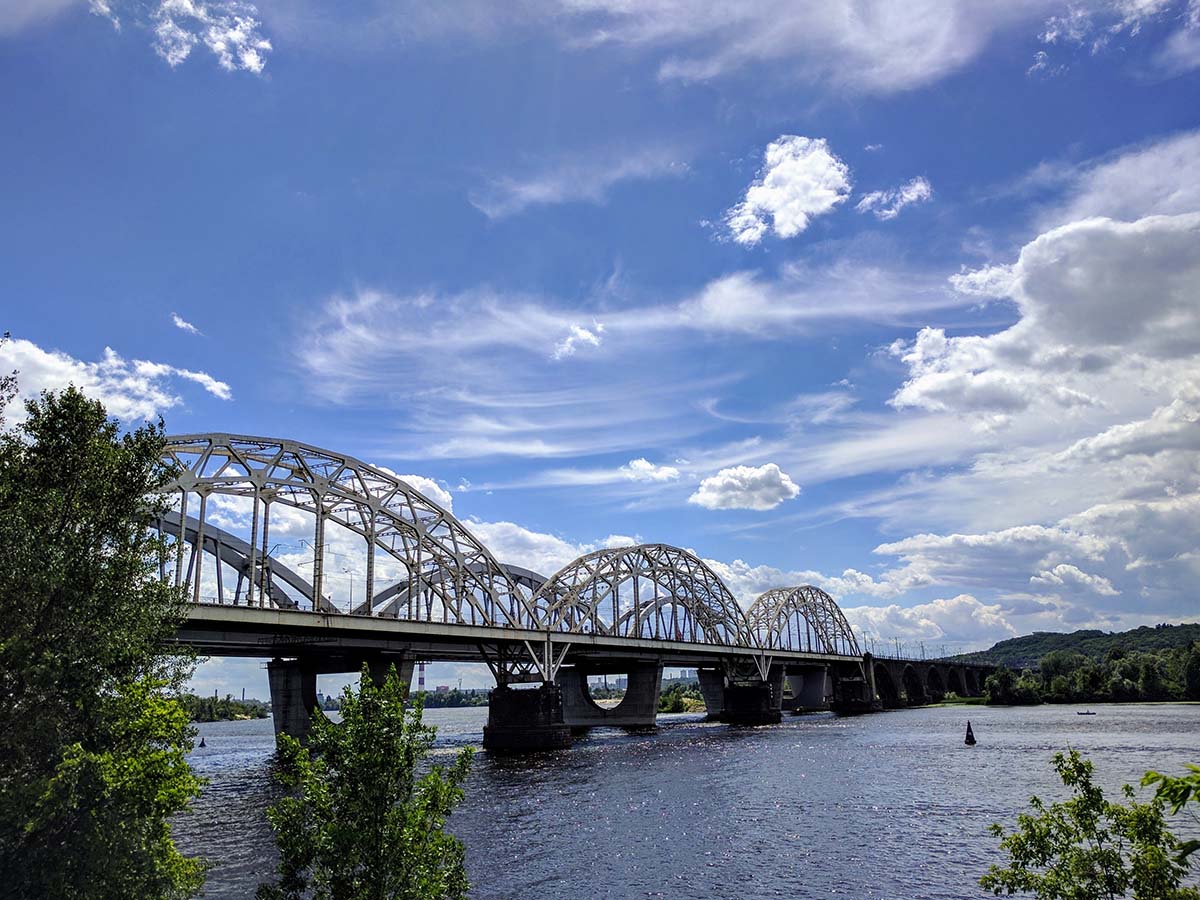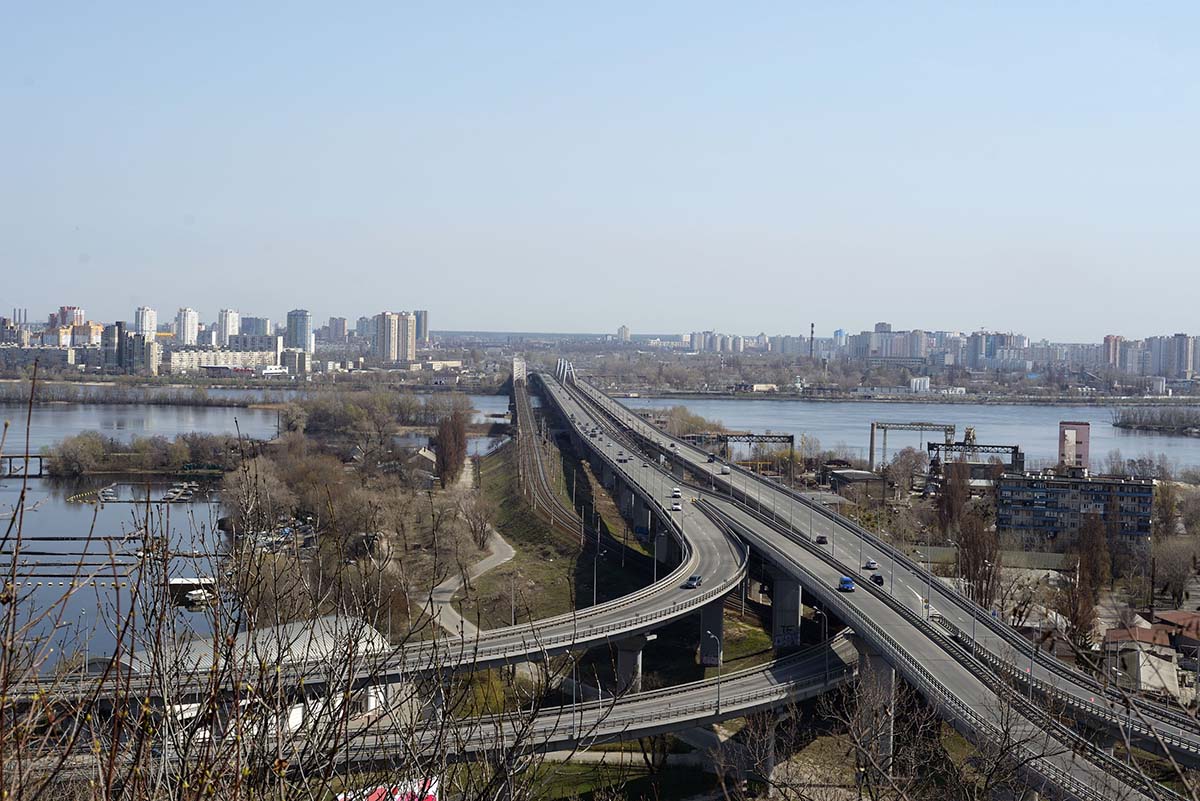Construction of the Darnitsky railway bridge began in March 1868. The bridge had 11 supports and 12 spans of 89 meters each, the total length was 1068 meters. The bridge had one railway track, the supports were built using caisson technology. On February 12, 1870, during a test, a special train consisting of 6 locomotives drove across the bridge. For the construction of the bridge on February 26, 1870, Amand Struve, by order of Emperor Alexander II, was awarded two military ranks – lieutenant colonel and colonel. In June 1920, the Darnitsky railway bridge was blown up by retreating Polish troops, but was restored in September of the same year. On September 19, 1941, the bridge was destroyed by Soviet troops during their retreat. During the German occupation it was restored. It was finally destroyed by the German military in early November 1943. After the liberation of Kyiv in 14 days and nights, from November 7 to 20, 1943, a temporary low-water railway bridge was built nearby, which was replaced by a temporary high-water one in the spring of 1944.
The current Darnitsky railway bridge was built somewhat south of the former Struve Bridge. In 1946-1950, bridge supports (bulls) were built on driven reinforced concrete piles and intermediate supports on caissons, which were made using the flow-speed method and lowered using a hydromechanized method (the so-called “blind caisson”). The bridge girders were manufactured at the Dnepropetrovsk Metal Structures Plant named after Babushkin and installed by Bridge Squadron No. 2 under the leadership of Isaac Barenboim. The bridge over 2 railway tracks is designed according to an asymmetrical design. Closer to the left bank there are 3 large shipping spans of 106 meters each, covered with arched metal trusses with train traffic in the lower part. The shallow right-bank part of the channel is blocked by 12 smaller (53 meters each) monolithic reinforced concrete arches with a prefabricated riser surface structure designed for passage above. All bridge supports are massive, monolithic, lined with granite. Several supports of the Struve Bridge have been preserved and can be seen just north of the Darnitsky railway bridge.
In July 2004, next to the Darnytskyi railway bridge, they began to build the Darnytskyi railway-road bridge (popularly “the Kirpy bridge”; the Minister of Transport of Ukraine, who initiated the reconstruction Darnitsky railway station and construction of the bridge). In December 2008, the opening of labor traffic on one track took place. In September 2010, the first part of the bridge – its railway component – was officially opened, the first trains began running, and in December, automobile traffic on the bridge was opened from the left bank of Kiev to the right, in March 2011 – from the right bank to the left. In May 2011, a car entrance was opened from Paton Bridge, and in August the entrance towards Vydubychi was opened. As of 2018, almost the entire bridge crossing project, except for the left bank entrances and exits from the bridge to the Dnieper embankment, the construction of which has been suspended and the delivery time is unknown, has been put into operation.


